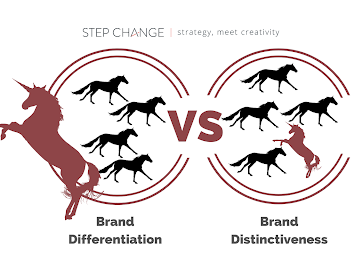At some point, a business may need to rebrand to stay competitive in the market. But how do you ensure a smooth transition and not lose any customers in the process?
Insight: More than just a change in logo, there’s a huge risk involved in rebranding. Many brand launches fail because of a lack of alignment with their goals and having no clear brand strategy to begin with.
Data: Only 60% of marketers think their brand is well aligned with their long-term goals (Source)
Key Action Point: Learn about the key ingredients to a successful rebranding for your brand.
What Is Rebranding?
Before we dive deep into rebranding, let us first define it for the most novice of our readers.
Rebranding is when you redesign certain elements of your brand identity — from changing the name of the brand, modifying the logo, using new colours to developing a new messaging that resonates with your intended audience.
It’s a process that takes thorough audience and market research; it’s not something you do often as you could lose your customer’s loyalty.
When Should You Consider Rebranding?
For businesses who are exploring a change in their business strategy or looking to reposition themselves in the market, rebranding can be the next logical step. But before anything else, it is important to evaluate whether making such a change can deliver the business’s desired results.
Rebranding may be needed for the following reasons:
- To reposition the business in the market and address shifting market demands. It can help your business attract a new or your preferred target audience and stand out in the marketplace.
- To cater to a change in management, after a merger, or a business acquisition. When businesses undergo mergers and acquisitions, a rebrand can bring new life to the business and help announce their entry in the market.
- To compete in a new or changing market. Businesses need to watch trends and adapt to significant shifts in the market if only to taper any disruptive factors. This can help you improve your brand’s market dynamics and gain a competitive advantage.
- To rebuild your reputation or better reflect the business. If your business is suffering from the effects of a bad reputation, rebranding can help you start fresh and renew customer perception.
Recommended article: Brand Strategy: Everything You Need to Know
Developing Your Rebranding Strategy
Rebranding is crucial and, at times, necessary for business continuity. But how it’s done can spell the difference between retained or lost customers. To ensure a successful rebranding strategy, use the following questions as a guide.
How is your brand currently perceived in the market?
Allocate the time to really dig and research into how customers and competitors currently perceive your brand. What do your customers like and not like about your brand? What can you keep? What can you change?
What is your brand’s new identity?
Have an outline of how you want to successfully reposition your brand in the market. Think about all the crucial visual elements that tell the world who you are and that which makes a rebrand successful:
- Name and logo
- Tagline
- Brand colours
- Brand archetype and personality
- Brand messaging
- Your target audience
Create a brand style guide to ensure you’re able to represent your brand consistently across all of your marketing channels and materials.
More than anything else, evaluate if your brand positioning needs to be updated and if you need to tailor your message according to how you now position yourself in the market.
Have you updated your digital presence?
Your online presence is crucial to your rebranding strategy. Update your website and use it to communicate your new identity and your brand story. Creating the right content to build your new identity and using it to enforce a positive brand perception leads to greater revenue.
It’s the key to the success of your rebranding strategy, which is why making sure your website, social media channels, and email newsletters are built cohesively to tell your message can make all the difference.
Tying It Together
Rebranding can strengthen your brand and reposition you as a leader in the market. But to do this successfully, you need to build your new brand up consistently in a way that communicates who you are, why you’re doing it, and what you stand for.
Data shows that successful rebranding yields increased customer loyalty, an improved image, and a relatable identity. By being clear and confident in your brand identity, it is easier to attract the right audience and retain your customers.
Need a branding step change? Contact us to get started.







![Top 10 Articles C-Suites Read in the Step Change Blog [2019 Edition]](https://blog.hellostepchange.com/hubfs/step-change-top-10-articles-2019.001.jpeg)






